![]()
I write this with rage and grief, and also with guilt. This is not a rant but a call for action based on shared responsibility. But because that action is urgently needed, it is written without my usual diplomatic and dispassionate filters.
I will speak truth to power, even at the risk of angering some colleagues and groups. But I will be fair and constructive and suggest concrete steps that can stop the Lumad killings in Surigao del Sur and address the roots of these recent events.
This must be done before it spreads any further. This militarization started in Bukidnon and Davao del Norte and now has jumped to Surigao. It’s anyone guess where this goes next but it won’t stop unless drastic measures are taken.
Above all, if we want these atrocities to stop, we must leave the Lumad alone – allow them to independently make decisions about their ancestral domains, their natural resources, their educational system (including the choice of their teachers), and other matters critical to them. We must completely respect their right to free and prior informed consent – starting with entering their territory.
Both the military and the New People’s Army (NPA) must pull out of their areas, all of which must be demilitarized and declared peace zones. All economic activities by outsiders, including mining operations, must be stopped and all applications frozen in those areas so the conflict does not expand further. This should be done immediately in the affected areas and if necessary through all Lumad areas of Mindanao.
Why should we care about the Lumad?
Lumad is a collective term, meaning homegrown or indigenous, used to refer to 15-18 ethno-linguistic groups in Mindanao. Among those usually included as Lumad are the Subanen, B’laan, Mandaya, Higaonon, Banwaon, Talaandig, Ubo, Manobo, T’boli, Tiruray, Bagobo,Tagakaolo, Dibabawon, Manguangan, and Mansaka. It should be noted that from these groups there are hundreds and even thousands of sub-groupings that are independent or at best loosely related to each other even when there are many linguistic and cultural similarities among them.
Why should we care about the Lumad? We must be concerned because they are among the poorest and marginalized in our society.
The Lumad are also among the most peaceful and gentle, and therefore the most vulnerable. When provoked however, like their counterparts in Luzon and the Visayas, the Lumad fight back as they have done with the Spanish and American colonizers and the national government in the more recent past. Because many of the island’s natural resources, especially minerals, are in Lumad territory, they are frequently attacked and their ancestral domains encroached upon by outsiders. Such development aggression in turn becomes the breeding ground of the national democratic revolution and the communist insurgency.
There will be no peace in Mindanao and in the Philippines if the rights of the Lumad are ignored and disregarded. Even the successful establishment of the Bangsamoro will not lead to peace without the full inclusion of the Lumad.
What is happening to the Lumad?
Last September 1, 2015, Lumad educator Emerito Samarca, executive director of the Alternative Learning Center for Agricultural and Livelihood Development, a school recognized for its innovative and effective way of teaching, was found in a room in the school, with hands and feet bound, throat slit. As reported by interAksyon.com, TV 5’s news website, on that same day, two Lumad leaders Dionel Campos and Datu Juvillo Sinzo were also executed, in front of hundreds of children and residents in Han-ayan, Lianga, Surigao del Sur. It is alleged that the educator and leaders were killed by a tribal paramilitary force formed and organized by the military to fight the NPA.
As a result of the September 1 killings, more than 3,000 Lumad refugees are now in Tandag, capital town of Surigao del Sur.
In a strongly worded editorial, interaksyon.com describes Surigao del Sur Governor Johnny Pimentel as not mincing words about whom he blames: “He has had the balls to speak not only about how and by whom all of this nightmare started, he has a pretty good idea how it can all be put to a just and satisfying end. Pimentel says the militias and their military handlers should be prosecuted – even killed if necessary.”
This is not the first time that Lumad in Mindanao has been attacked and their leaders killed in the name of the fight against communist rebels.
Just a few months ago, hundreds of Lumad from Bukidnon and Davao del Norte evacuated to Davao City to flee from military operations in their ancestral domains. There was a charge that the evacuees in Davao City had been kidnapped by militants. But in a dramatic confrontation with Representative Nancy Catamco, Chairperson of the committee on indigenous peoples of the House Of Representatives, it was established by the Davao City government that the Lumad had in fact sought refuge as their supporters have claimed. Mayor Rody Duterte himself affirmed this and backed the Lumad refugees against Catamco’s claim that they were not in Davao out of their own free will. This was later affirmed by United Nations Special Rapporteur on the human rights of internally displaced persons Chaloka Beyan who denied the military claim that the Lumad in Davao City had been trafficked.
To be fair, the military has said it welcomes any probe, with the Manila Standard quoting Brig. Gen. Joselito Kakilala, Commander of the Armed Forces of the Philippines Civil Relations Service (AFP-CRS) as promising: “We will cooperate and support any official investigation. Killings of defenseless civilian is outside of the military parameter. We do not condone these atrocities.” In the same report, AFP spokesman Restituto Padilla also denied the hand of the military in the killings. Padilla is quoted as saying: “The AFP is also doing its own internal investigation to ascertain if AFP actions were appropriate relative to this unfortunate event.” The spokesman assured the public that the military had the interest of the Lumad and respect for their culture “foremost in their minds.”
In contrast to these assurances of the military are the poignant words of Michelle Campos, daughter of one of the slain Lumad leaders. Inday Espina-Varona, in an article on ABS-CBNnews.com quotes her as saying: "My message to the government, especially our honorable President is, stop your Oplan Bayanihan that supposedly leads to peace and progress. Because the reality is, it has never brought peace or progress. You say it will bring peace to the lumad. Yes, it is true peace could come to our community because by then the paramilitary would have killed us all. And once all lumad who defend their ancestral lands have been killed, the capitalists will enjoy progress because they will be able to mine our lands."
The big picture: the elephants in the room
I have worked in many Lumad areas for 30 years as an environmental and human rights lawyer and know the dynamics very well. There are two elephants in the room here – at a superficial level, the communist insurgency and the national democratic revolution which finds the Lumad squeezed between the military and the New People’s Army; at a deeper level, this is about control over natural resources, especially the minerals, that are abundant in Lumad territory.
The truth is that this is not even principally about the insurgency even if both sides are using the Lumad for propaganda. As I mentioned to Carmela Fonbuena in an article she wrote for Rappler on this issue, it's about control of natural resources and ancestral domain. Before it was about logging. Now it's mining.
I know that because when I was environmental undersecretary in the 1990s I had to mediate many conflicts in the area and at the bottom of it, it was because military and paramilitary forces were used to expel the Lumad from their domains and the NPA came in to take advantage of the situation by becoming the protectors of the Lumad and get their support for the national democratic struggle. That in turn became the excuse to implement programs like Oplan Bayanihan that divides the Lumad and pit them against each other.
It is a lie and a falsehood to lay the blame on the killings on the NPAs or even on internal conflicts as is now being circulated by propagandists. This red-baiting assures you that the season of killing will continue; this is the kind of propaganda which will get even more Lumad killed. Indeed, this is a go signal for that. It is immoral, downright evil, for propagandists and other people to trumpet this line. And it is especially sad that some peace workers are mouthing this.
At the same time, it must be also said as forcefully that the presence of the NPA has made the Lumad more vulnerable and has worsened their situation. Knowing personally many military officials, as colleagues and as students, I cannot imagine them tolerating serious human rights violations. But things happen, as they say, in the fog of war when our solders are faced with an enemy that knows how to disappear into the masses. I suppose that this is the same feeling of tribal militiamen – they too are afraid and so strike at whoever they believe threaten them.
Sadly, if in fact this is about the control of natural resources and ancestral domains, then the military, tribal militia, the Lumad communities, and the NPA are just pawns to drive the people away from their territory.
What needs to be done
The first thing to be done, as already pointed out, is to demilitarize the area and for peace zones to be declared in all affected Lumad areas. The military and the NPA must withdraw immediately. The tribal militia in Surigao del Sur and elsewhere must be disarmed. Those who killed the Lumad educators and leaders should be arrested, charged, and held accountable for the murders they committed.
An international investigation must be conducted in parallel with a Commission on Human Rights (CHR) investigation. This is necessary not only to determine the facts of the killings and aid in the prosecution also to identify the root causes of the conflict within Lumad territory. I fully trust the new Chairman of the CHR but it would work best if he put together a mission composed of credible and independent individuals that will take on the task of investigation.
I strongly suggest that the government invite UN Rapporteur for the rights of indigenous peoples Vicky Tauli-Corpuz to visit the affected areas and report on what she sees and make the appropriate recommendations. Vicky knows the Philippines very well, being a Filipina herself, and she is experienced in doing these investigations. Having worked with Vicky for decades on international and national indigenous peoples’ concerns, she has no ideological agenda in what is happening and will be guided only by the best interest of the Lumad.
If needed, human rights groups might consider filing a petition for a writ of amparo, requesting the Supreme Court to order the military and tribal militia from entering and having a presence in Lumad territory.
In the meantime, religious leaders must band with political leaders to make sure that no further killings happen. Already this is happening with the National Council of Churches in the Philippines and the Catholic Bishops Conference of the Philippines standing strongly with the Lumad. I suggest that high-profile delegations of these Churches and religious organizations be sent to the affected areas and accompany the Lumad back to their homes and stay with them until their safety is totally secure.
Political leaders have also begun speaking out with Vice President Jejomar Binay, and Senators Grace Poe and Loren Legarda taking the lead. It would be good if we could hear our Mindanao senators TG Guingona and Koko Pimentel speak out on this as well. The Representatives from the Agusan and Surigao provinces, or perhaps all districts where there are Lumad, might also want to do this.
Government agencies like the National Commission on Indigenous Peoples (NCIP) and the Department of Environment and Natural Resources (DENR) must come in and do their job. The NCIP must ensure certifications of Free and Prior Informed Consent have been correctly given and the proper Certificates of Ancestral Domains have been issued. The DENR must make an inventory of natural resource and mining permits and agreements and make sure they are not exacerbating the situation. In fact, as I pointed out at the beginning of this article, such permits and agreements (and applications for them) must be put on hold to make sure they are not the reason of the conflict.
The Department of Education has a special role in addressing this problem. As the interaskyon.com editorial pointed out: “Educated lumad like Samarca are looked upon as dangerous. They are tagged as rebel coddlers just because of the accident of birthrights and geography, (i.e., rebel camps are near their villages) - if not as communists themselves because, you know, they demand rights, schooling, support, concern for their environment, good governance and responsible practices from extractive industries.”
The sad part is that DEPED has been complicit in what is happening to the Lumad. Knowing the good people that are leading the department, I am sure that this was unintentional. How could any of them imagine that the closure of several Lumad schools earlier this year would lead to the evacuations in Bukidnon and Davao del Norte? How could a department circular allowing military and militiamen to set up camps within public schools in Lumad areas lead to the killing of the wonderful and great educator Emerito Samarca? But these are the unintended consequences when redbaiting propaganda is accepted without question. People die as a result when that happens.
My hope now is that DEPED Secretary Armin Luistro will prioritize this and take the necessary steps so further killings of educators do not happen. Among others, I respectfully suggest that the good secretary reach out to the Rural Missionaries of the Philippines, fellow religious and church workers who know most about what is happening to the Lumad. I have known of the work of the Rural Missionaries for decades. They have been consistent in their service to Church and people. Long before Jorge Bergoglio became Pope Francis, the Rural Missionaries have been immersed in the peripheries.
At the beginning of this article, I said I write this with rage, grief and guilt. I am angry because of the terrible injustice that is being done to these wonderful peoples we collectively call Lumad. I am filled with sorrow because the people that have been killed are the best of their peoples, the leaders and educators.
And I feel guilty because I did not act quickly enough. I am ashamed of myself for ignoring the signs, for using ideological and not human rights lens when this attack on the Lumad became evident.
But today, I put aside my guilt and shame aside and say: I stand by the Lumad. Today, this Filipino and this Mindanawon say: I am Lumad. Let’s all be. – Rappler.com
![]()
 Thousands of Syrian refugees are suffering and dying across Europe and the Philippine Government must play an active role in helping them. For several years, the Philippines has not known any huge role in foreign affairs aside from creating a fuss with the South China Sea. While the dispute helps concretize our sovereignty over uncertain waters and territories, we do not have an active role in aiding countries elsewhere.
Thousands of Syrian refugees are suffering and dying across Europe and the Philippine Government must play an active role in helping them. For several years, the Philippines has not known any huge role in foreign affairs aside from creating a fuss with the South China Sea. While the dispute helps concretize our sovereignty over uncertain waters and territories, we do not have an active role in aiding countries elsewhere. 
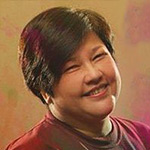
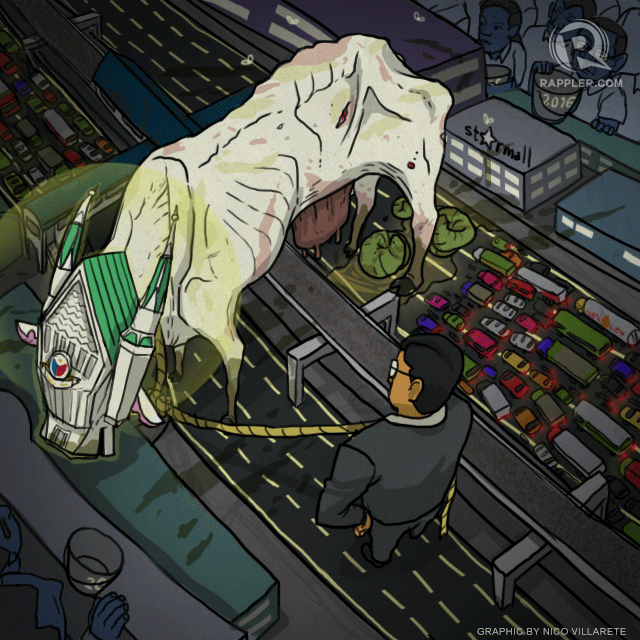
 When we talk about climate change, we talk about the science, the economy, the financing. The last 20 years of the United Nations Framework Convention on Climate Change (UNFCCC) negotiations has always been about the numbers, the statistics, and the data. How much carbon emissions should we mitigate? How much resources do we need to adapt? How much will this cost our gross domestic product (GDP)?
When we talk about climate change, we talk about the science, the economy, the financing. The last 20 years of the United Nations Framework Convention on Climate Change (UNFCCC) negotiations has always been about the numbers, the statistics, and the data. How much carbon emissions should we mitigate? How much resources do we need to adapt? How much will this cost our gross domestic product (GDP)?
 Mga 2009 noong nag-exposure trip kami ni Angel sa Lianga, Surigao del Sur, sa pakikipag-ugnayan sa Rural Missionaries of the Philippines at sa Promotion of Church People's Response.
Mga 2009 noong nag-exposure trip kami ni Angel sa Lianga, Surigao del Sur, sa pakikipag-ugnayan sa Rural Missionaries of the Philippines at sa Promotion of Church People's Response.













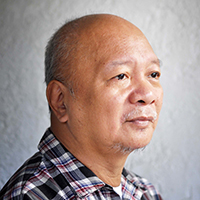
 It’s been a bloodbath for the Lumad, the collective name for the indigenous peoples of the southern Philippines island of Mindanao. On August 18, Philippine government soldiers allegedly 5 five members of a Lumad family – including children ages 13 and 17 – in Bukidnon province. On September 1, suspected members of a government-backed paramilitary group
It’s been a bloodbath for the Lumad, the collective name for the indigenous peoples of the southern Philippines island of Mindanao. On August 18, Philippine government soldiers allegedly 5 five members of a Lumad family – including children ages 13 and 17 – in Bukidnon province. On September 1, suspected members of a government-backed paramilitary group  The Faculty of Arts and Letters (AB) of the University of Santo Tomas (UST) suspended the haircut and hair color policy last year after a campaign was launched by students. But the AB administration has recently re-implemented the policy.
The Faculty of Arts and Letters (AB) of the University of Santo Tomas (UST) suspended the haircut and hair color policy last year after a campaign was launched by students. But the AB administration has recently re-implemented the policy.
 Earlier this May, the Philippine government proudly proclaimed the country’s improved performance in this year’s World Economic Forum (WEF) Travel & Tourism Competitiveness Report (TTCR).
Earlier this May, the Philippine government proudly proclaimed the country’s improved performance in this year’s World Economic Forum (WEF) Travel & Tourism Competitiveness Report (TTCR).




 The new Marcos supporters,
The new Marcos supporters, 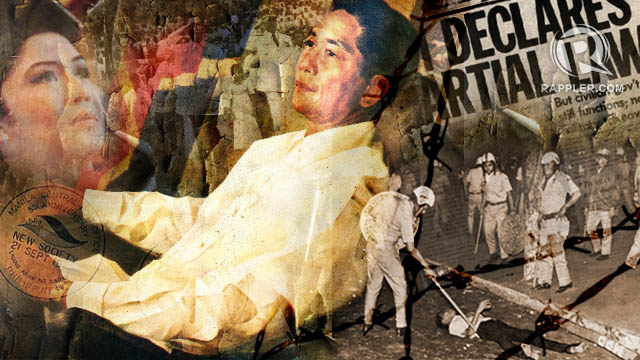
 I recently directed traffic for three hours on the block where I live. Scratch that from my bucket list.
I recently directed traffic for three hours on the block where I live. Scratch that from my bucket list.
 Upon landing in Beijing as a Philippine delegate to the APEC Voices of the Future (VOF) program, I expected our schedule to be flooded with lectures and seminars consisting of chief executive officers (CEOs), heads of state, and cabinet officials exchanging ideas on investment and trade.
Upon landing in Beijing as a Philippine delegate to the APEC Voices of the Future (VOF) program, I expected our schedule to be flooded with lectures and seminars consisting of chief executive officers (CEOs), heads of state, and cabinet officials exchanging ideas on investment and trade. 

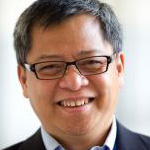 Ok, it is only once in a couple of decades that the UP Maroons are able to achieve feats that are unexpected of them. So there is every reason to be part of the merriment over what the old alma mater’s basketball team had done:
Ok, it is only once in a couple of decades that the UP Maroons are able to achieve feats that are unexpected of them. So there is every reason to be part of the merriment over what the old alma mater’s basketball team had done: 
.jpg) Editor's note: Celebrity host KC Montero earned the ire of many netizens on Thursday, September 11, after he said in his radio program that mothers should cover their breasts when breastfeeding in public. (READ:
Editor's note: Celebrity host KC Montero earned the ire of many netizens on Thursday, September 11, after he said in his radio program that mothers should cover their breasts when breastfeeding in public. (READ: 
 Abortion
Abortion
